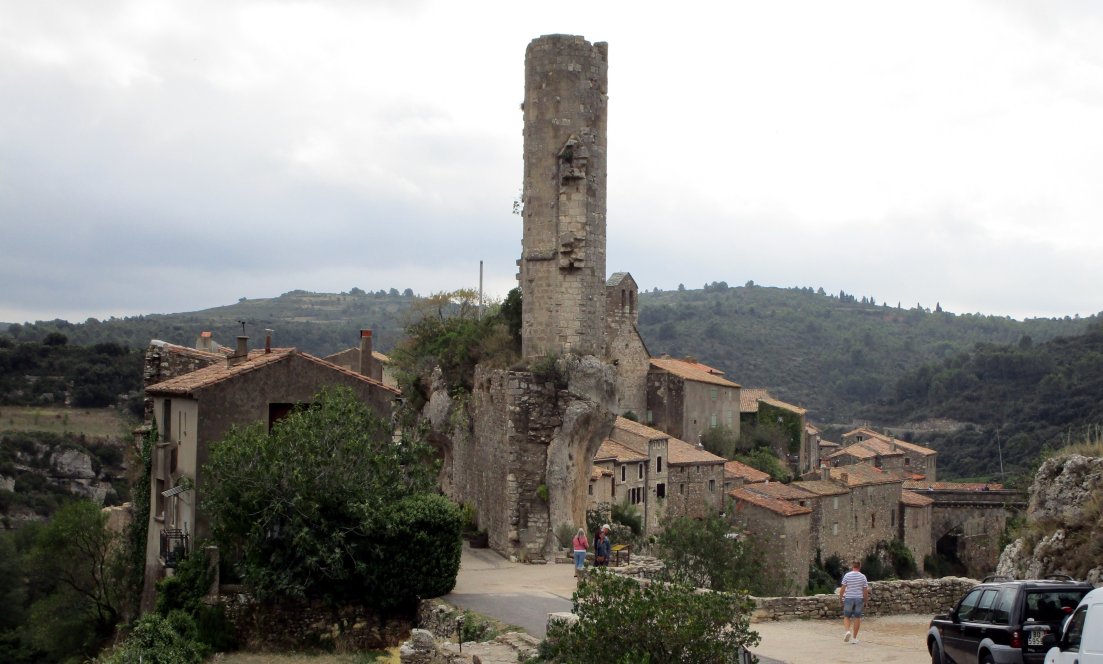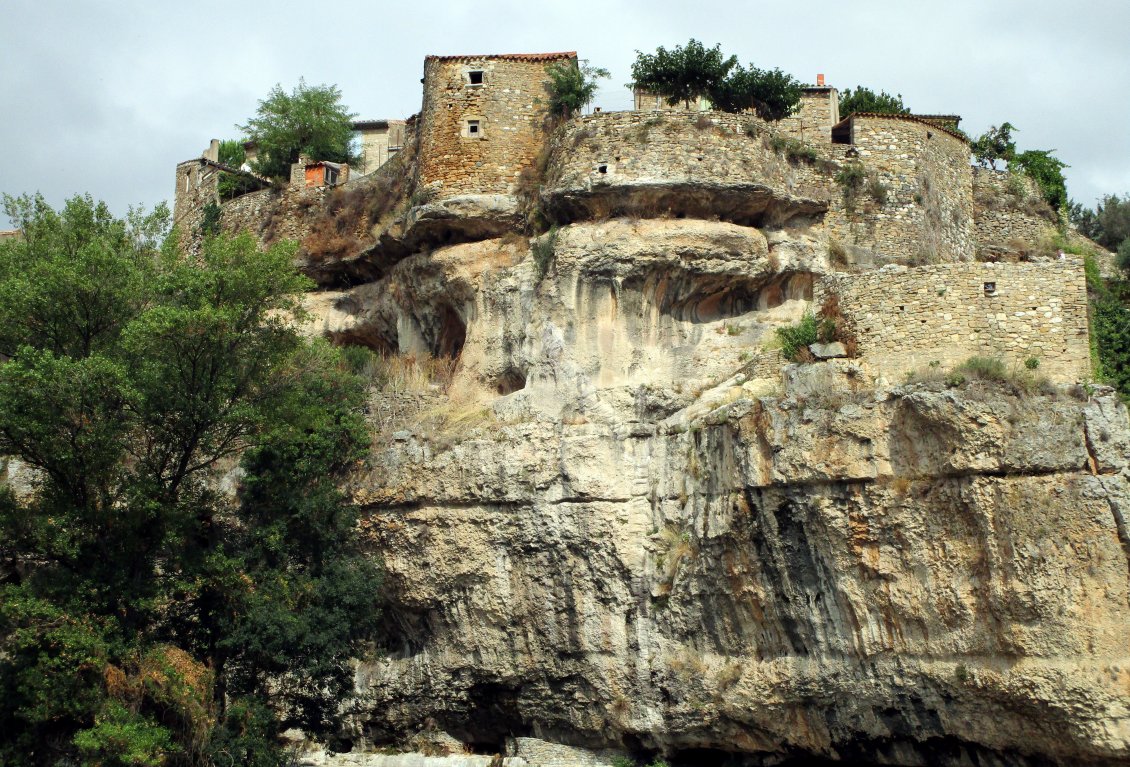Minerve

 Description
Description
Today bus tourists enter the town from the west over the great
bridge. This leads into the main town and its scant remains of
the early fortifications on the south side towards the river.
Here are the shells of the towers and gates that once stood against the
Crusaders. These defences are a mixture of round and rectangular
towers joustling against and over the edge of the cliff and still
proudly opposing the reconstructed Malevoisine
across the River Cesse on another crag. On the west side of the
town the river dives through a natural tunnel under the adjoining spur.
The castle stood to the north, blocking the castrum off from the higher
part of the ridge. Little remains of the fortress except for the
candela - a slender fragment of wall standing on a rock base - and what
is said to be one side of an unimposing enceinte hard against the cliff
edge.
Why not join me here and at other French
castles? Information on this and other tours can be found at Scholarly
Sojourns.
Copyright©2019
Paul Martin Remfry


 Description
Description